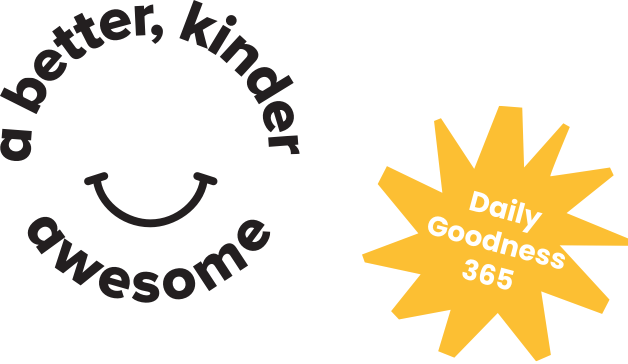At its heart, Habitat is about connection. Connection between kids and the animals they love, between families and the planet we share, and between creativity and real-world action.
When we set out to create the Habitat Collection, the goal was simple: design school and everyday essentials that families already know and love, but reimagine them in a way that’s kinder to the environment and meaningful in purpose. What started as an idea for a more sustainable range quickly grew into something bigger, a collaboration that helps protect Australia’s most threatened wildlife.
At the heart of the range is the exclusive Threatened Aussies print, featuring 16 incredible animals currently at risk – from cuddly koalas and prickly echidnas to colourful parrots and more. Each one has been brought to life with hand-illustrated designs that kids will love exploring, spotting their favourites, and learning about along the way.
And the best part? For every Habitat item sold, $1 goes directly to the Australian Wildlife Conservancy, supporting real conservation work on the ground.
It’s everyday essentials for school and play, with a deeper purpose – designed to inspire a better, kinder world for kids, families, and the wildlife we share it with.
A Collaboration With Purpose
To bring Habitat – Threatened Aussies to life, we partnered with the Australian Wildlife Conservancy (AWC). Every product sold helps fund their critical on-ground work — from creating safe havens for bilbies, koalas, and gliders, to managing fire and removing feral animals that threaten native species.
As AWC’s Genevieve Deaconos explains, “Kids see their favourite products featuring these native animals, while those same products fund real action to protect them. It’s a fun, practical way to spark curiosity and introduce children to the idea of caring for nature.”
Through Habitat, everyday essentials become tools for conservation.
The Design Behind the Range
For designer Susie Myers, the journey began with a passion for creating products with a lighter footprint. Each piece in the collection is made using recycled plastic bottles; 43 bottles in a backpack, 13 in a lunch bag, 38 in a drawstring bag, and 7 in a carry case. The insulated water bottle continues this same commitment, designed to help families reduce single-use plastics by encouraging reuse every day. Even the straps and buckles were reconsidered, with natural cotton and metal replacing synthetic plastics where possible.
But the sustainability story doesn’t stop there. The Habitat – Threatened Aussies design celebrates Australia’s most vulnerable wildlife. From the Numbat, who can eat up to 20,000 termites a day, to the brightly coloured Gouldian Finch, each animal was carefully chosen not just for its beauty, but for the story it tells about resilience and conservation.
“Art is a powerful way to engage children,” Susie explains. “When paired with storytelling and education, it becomes a tool that invites curiosity and emotion. That’s what makes Habitat different — it’s not just school gear, it’s a conversation starter.”
While the bags give new life to recycled materials, the insulated water bottle champions the same goal in a different way by reducing single-use plastics through encouraging daily reuse. Together, they show that thoughtful design can make even small choices count for the planet.
Animals at the Heart of Habitat- Threatened Aussies
The design features some of Australia’s most unique creatures, each with their own story:
Numbat
These little marsupials are termite-munching machines, slurping up to 20,000 termites a day with their sticky tongues. Sadly, they’re the perfect snack size for cats and foxes.
Gouldian Finch
Often called the “rainbow bird,” these tiny finches are living colour explosions with feathers of purple, green, yellow, red and blue. But wildfires can wipe out their food supply in a flash.
Pink Cockatoo
With soft pink feathers and a bold crest, these cockies are true Aussie show-offs. But they need very old trees with hollows to nest in — and those trees are becoming rare. AWC steps in to protect the trees they call home, keeping future generations safe and stylish.
Greater Glider
Glides up to 100 metres, steers with its big fluffy tail, wraps itself up to keep warm in winter.
Corroboree Frog
Small but striking, black and yellow, one of Australia’s most endangered frogs, tricky to illustrate but visually powerful.
Golden Sun Moth & Northern Leaf-tailed Gecko
Susie included these less well-known species in the design to give spotlight to underrepresented wildlife.
And that’s not all — the artwork celebrates even more animals, reminding us that every species plays an important role in protecting Australia’s natural heritage.
More Than Just Products
Every Habitat – Threatened Aussie purchase comes with a booklet filled with fun facts and activities. Kids aren’t just carrying a backpack, they’re carrying a story. They’re learning why the Gouldian Finch needs its grasslands, how the Greater Glider uses its fluffy tail to steer through the treetops, or why the Corroboree Frog’s bold markings make it so unique.
And it’s not just what they carry — it’s what they use every day. With the insulated water bottle, kids can refill and reuse instead of reaching for single-use plastics, putting the “reduce and reuse” message into real action.
It’s about sparking curiosity at school, at home, or anywhere life takes them. And it’s about showing kids that small choices — like the bag they carry or the bottle they refill — can make a big difference.
A Better, Kinder, Awesome World
The Habitat Collection brings together everything we believe in:
Better, through more sustainable materials that reduce waste and give plastics a new life.
Kinder, by giving back to protect wildlife and the places they call home.
Awesome, by inspiring kids with creativity, curiosity, and conservation stories that last well beyond the classroom.
Because when kids feel proud of what they carry, they start to see themselves as part of the solution. And that’s where real change begins.
Together, one bag, one lunch box, one child at a time, we’re protecting habitats and building a brighter future for our wildlife.



